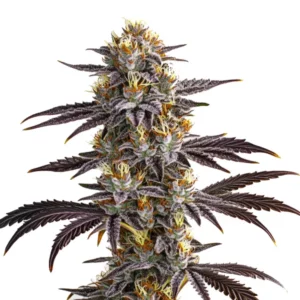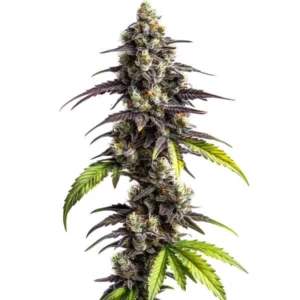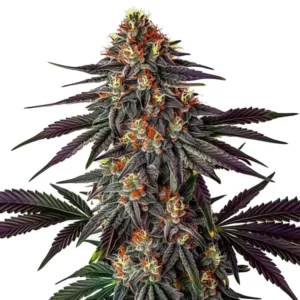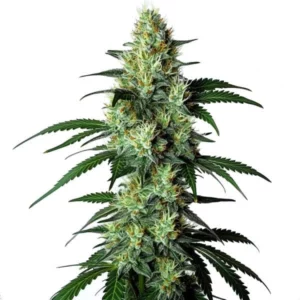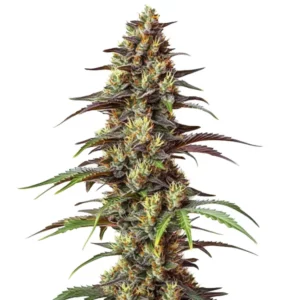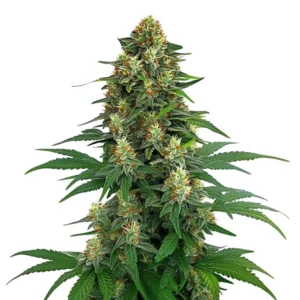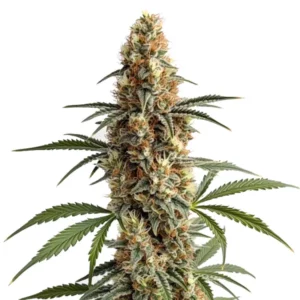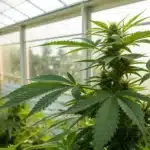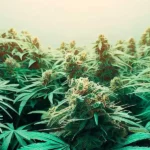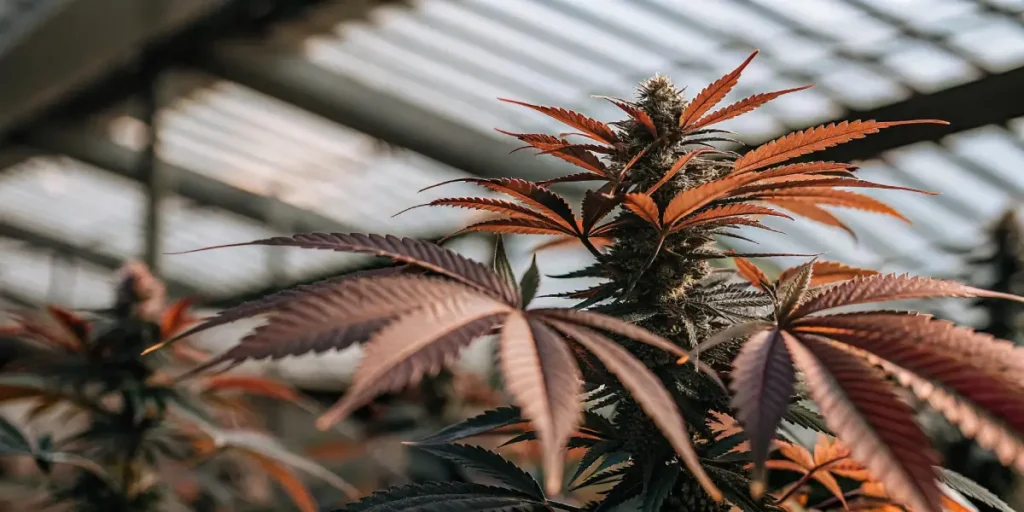
Auxins vs Cytokinins in Cannabis
Auxins and cytokinins are two types of hormones that play a crucial role in cannabis growth. These hormones, though tiny, have a massive impact on how your cannabis plants develop. As you dive into the world of growing cannabis, knowing the effects of auxins vs cytokinins on cannabis yields can make all the difference.
Auxins are often considered the growth hormones of plants. They help in elongating cells, which means they are crucial for the vertical growth of your cannabis plant. On the other hand, cytokinins are responsible for cell division. They promote bushier growth, making your plant spread out more horizontally rather than vertically.
Recommended Strains
Gelato Auto
|
|
THC | 19% - 21% (Medium) |
|
|
Type | Autoflowering |
|
|
Yield | Medium |
|
|
Phenotype | 40% Indica / 60% Sativa |
Ghost Train Power
|
|
THC | 28% - 30% (High) |
|
|
Type | Feminized |
|
|
Yield | High |
|
|
Phenotype | 20% Indica / 80% Sativa |
Knowing how these hormones influence cannabis growth can greatly enhance your cultivation process. Whether you’re a first-time grower or have years of experience under your belt, auxins and cytokinins play a pivotal role in shaping your cannabis plants. By comparing auxins and cytokinins in cannabis cultivation, you can adjust your approach for better yields.
Auxins: The Vertical Growth Boosters
Auxins are primarily found in the tips of shoots and roots. They move downward to promote cell elongation, which is essential for vertical growth. This means taller plants and more space between branches. If you’re growing a strain like Blue Dream from Blimburn Seeds, auxins will help it reach its full height potential.
But auxins do more than just make plants taller. They also play a part in root development. Strong roots mean better nutrient absorption, which is crucial for healthy growth. When your cannabis has a robust root system, it can support more branches and leaves, resulting in a more substantial plant overall.
In the context of auxins vs cytokinins cannabis, auxins serve as the driving force behind a plant’s upward expansion. They are integral in ensuring that the plant can capture more light, which is essential for photosynthesis. The influence of auxins and cytokinins on cannabis plant development is evident as they work together to balance growth patterns.
Additionally, the function of auxins extends to wound healing in plants. When a plant is pruned or damaged, auxins accumulate around the injury, promoting tissue regeneration. This healing process is a testament to the adaptability and resilience of cannabis when auxins are adequately managed.
- Promotes vertical growth.
- Aids in root development.
- Enhances nutrient absorption.
Promos & Deals
Cytokinins: Encouraging Bushier Growth
While auxins make your plant taller, cytokinins work to make it bushier. They encourage lateral growth, leading to more branches and leaves. For a strain like Gorilla Glue #4 from Blimburn Seeds, cytokinins can help achieve that dense, bushy appearance it’s known for.
Cytokinins are mainly found in areas of active growth, such as roots and young leaves. They balance out the effects of auxins, ensuring that your plant doesn’t just grow taller but also fills out nicely. This balance is vital for maximizing light exposure and photosynthesis.
By enhancing lateral growth, cytokinins improve the plant’s ability to utilize available space efficiently. This is especially beneficial in indoor growing environments where space is often limited. The auxins vs cytokinins impact on cannabis flowering can be seen in how well a plant can fill its designated area with productive branches.
Furthermore, cytokinins have been shown to delay aging in plants by maintaining the greenness of leaves. This prolongs the photosynthetic capacity of the plant, thereby supporting sustained growth and development. In the dynamic interplay of auxins and cytokinins, cytokinins ensure that the plant remains vigorous and productive throughout its lifecycle.
- Stimulates lateral growth.
- Improves light exposure.
- Balances plant development.
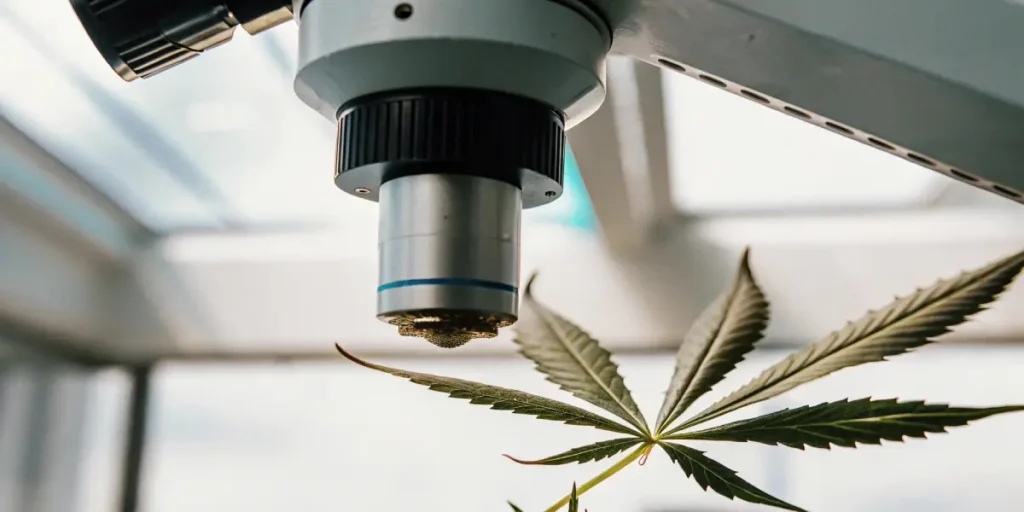
Auxins vs Cytokinins in Cannabis Cultivation
When it comes to auxins vs cytokinins cannabis, it’s all about balance. Too much auxin and your plant could end up tall and spindly. Too much cytokinin might lead to a plant that’s bushy but not very tall. Finding the right balance ensures the best of both worlds.
Experienced growers often manipulate these hormones to optimize growth patterns. For example, topping your plants can encourage more cytokinin activity, leading to a bushier plant. Meanwhile, allowing your plant to grow naturally might favor auxin activity, promoting height.
The effects of auxins vs cytokinins on cannabis yields are profound, impacting not only the size but also the quality of the harvest. By knowing the auxins and cytokinins role in cannabis growth, growers can tailor their strategies to meet specific cultivation goals. This knowledge empowers cultivators to achieve both aesthetic and yield objectives.
Moreover, the strategic application of techniques like pruning and training can refine the balance between these hormones. By comparing auxins and cytokinins in cannabis cultivation, growers can develop a customized approach that maximizes the plant’s potential, leading to a more efficient and rewarding growing experience.
- Balance is key.
- Manipulate growth patterns.
- Optimize plant structure.
Influence on Cannabis Flowering
The auxins vs cytokinins impact on cannabis flowering is another critical aspect. Auxins can delay flowering by focusing the plant’s energy on growth. However, a balance with cytokinins can encourage earlier flowering, which is essential for indoor growers with limited time.
Strains like Tangie from Blimburn Seeds benefit from a well-managed hormone balance to ensure timely flowering. By knowing how these hormones work, you can better predict flowering times and manage your grow schedule accordingly.
The influence of auxins and cytokinins on cannabis plant development extends to the flowering phase, where precise hormone management is key to achieving desired outcomes. Auxins, by promoting vegetative growth, can inadvertently postpone the transition to flowering, which might not be ideal for time-sensitive grows.
However, the synergistic action of cytokinins can counterbalance this effect by promoting bud formation and development. This dual influence allows growers to tailor the flowering process, ensuring that plants reach maturity at the optimal time for harvest, enhancing both the quality and quantity of the yield.
- Manage flowering times.
- Balance growth and flowering.
- Essential for indoor grows.
Practical Tips for Using Auxins and Cytokinins
For those looking to optimize their cannabis cultivation, here are some practical tips. Start by observing your plant’s growth patterns. If it’s too tall, consider techniques that boost cytokinin levels like topping or pruning. If it’s too bushy and short, let it grow more naturally to boost auxin levels.
Also, consider using hormone supplements carefully. Products that enhance auxins or cytokinins can be found, but use them sparingly. Too much can lead to imbalances and stress your plant, reducing yields instead of boosting them.
Integrating these tips into your growing practices can lead to significant improvements in plant health and yield. By continuously monitoring and adjusting the auxins vs cytokinins cannabis balance, you can create an environment that supports optimal growth conditions. This dynamic management allows for greater flexibility in responding to the plant’s needs.
Furthermore, keeping a detailed log of your growing practices can help you refine your techniques over time. Documenting the effects of different hormone levels on plant development provides valuable insights into how auxins and cytokinins role in cannabis growth can be harnessed for better results. This proactive approach facilitates continuous learning and improvement.
- Observe growth patterns.
- Use pruning to adjust hormone levels.
- Carefully consider supplements.
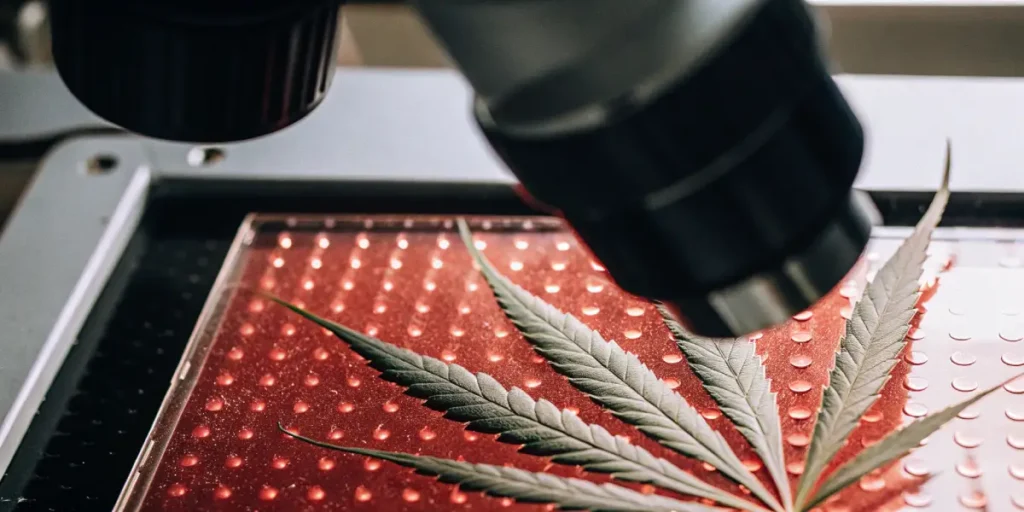
FAQs About auxins vs cytokinins cannabis
How do auxins and cytokinins affect cannabis yields?
The effects of auxins vs cytokinins on cannabis yields can be significant. Auxins promote vertical growth and root development, which supports a larger plant structure. A healthy root system improves nutrient absorption, which can lead to better yields.
On the other hand, cytokinins encourage bushier growth. This means more bud sites and potentially higher yields. The trick is balancing these hormones to optimize both height and bushiness, ensuring maximum light exposure for all parts of the plant.
By knowing the influence of auxins and cytokinins on cannabis plant development, growers can better predict how their plants will respond to different growing conditions. This foresight allows for strategic planning and optimization of resources, ultimately leading to enhanced productivity and yield quality.
Moreover, as growers become more adept at manipulating these hormones, they can experiment with different strains to see how auxins vs cytokinins cannabis balance affects various phenotypes. This experimentation can lead to breakthroughs in cultivation techniques and strain development.
Can I manipulate auxins and cytokinins naturally?
Yes, you can influence auxins and cytokinins naturally through techniques like pruning and topping. Pruning can increase cytokinin levels by encouraging lateral growth. Topping, which involves cutting the top of the plant, also promotes a bushier form.
Additionally, allowing your plants to grow naturally without interference can boost auxin levels, promoting taller growth. It’s all about finding the right approach for your specific strain and growing environment.
For those seeking a more hands-off approach, knowing the natural tendencies of auxins and cytokinins role in cannabis growth can be beneficial. Some strains may naturally lean towards a particular growth pattern, so aligning your practices with the plant’s inherent characteristics can lead to better outcomes.
Furthermore, environmental factors such as light intensity and soil composition can also influence hormone levels. By adjusting these conditions, growers can subtly steer the balance of auxins and cytokinins, achieving the desired growth form without excessive intervention.
What strains benefit most from auxin and cytokinin balance?
Strains like Blue Dream, Gorilla Glue #4, and Tangie from Blimburn Seeds benefit greatly from a balanced hormone approach. Blue Dream, known for its height, can achieve its best structure with proper auxin management.
Gorilla Glue #4, famous for its bushy appearance, thrives with enhanced cytokinin activity. Tangie, with its timely flowering needs, benefits from a careful balance to ensure optimal blooming times.
Each strain has unique characteristics that respond differently to hormone manipulation. By comparing auxins and cytokinins in cannabis cultivation, growers can tailor their approach to match the specific needs of each strain, maximizing their genetic potential.
Knowing the interplay of auxins vs cytokinins cannabis in different strains allows growers to make informed decisions about their cultivation techniques. This knowledge not only enhances yield but also improves the overall quality and potency of the final product.
Are there any risks in using hormone supplements?
While hormone supplements can be beneficial, there are risks involved. Overuse can lead to imbalances, stressing your cannabis plants. This stress can result in reduced yields and poor plant health.
It’s essential to follow product instructions carefully and start with lower doses. Monitor your plants closely for any adverse reactions and adjust accordingly to maintain optimal growth conditions.
In the context of auxins vs cytokinins cannabis, moderation is key. Over-reliance on supplements can disrupt the natural growth processes of the plant, leading to unintended consequences such as stunted growth or susceptibility to disease.
To minimize risks, growers should consider integrating natural methods of hormone manipulation alongside the use of supplements. This balanced approach ensures that plants are not overwhelmed by synthetic inputs, maintaining their resilience and vitality.
How does hormone balance affect indoor vs outdoor growing?
Indoor cannabis cultivation allows for greater control over hormone balance. You can manipulate light, temperature, and humidity to influence hormone activity. This control can lead to optimized growth and yields.
Outdoor growing relies more on natural conditions, making it harder to manage hormone levels. However, knowing the natural tendencies of your chosen strains can help you make the most of outdoor conditions, balancing auxins and cytokinins for the best results.
The effects of auxins vs cytokinins on cannabis yields can vary significantly between indoor and outdoor settings. Indoor growers have the advantage of creating a controlled environment where they can experiment with different hormone balances to achieve optimal results.
On the other hand, outdoor growers can take advantage of natural factors such as seasonal changes and local climate, which can naturally influence hormone levels. By aligning cultivation practices with these environmental cues, outdoor growers can achieve a harmonious balance of auxins and cytokinins, leading to healthy and productive plants.


